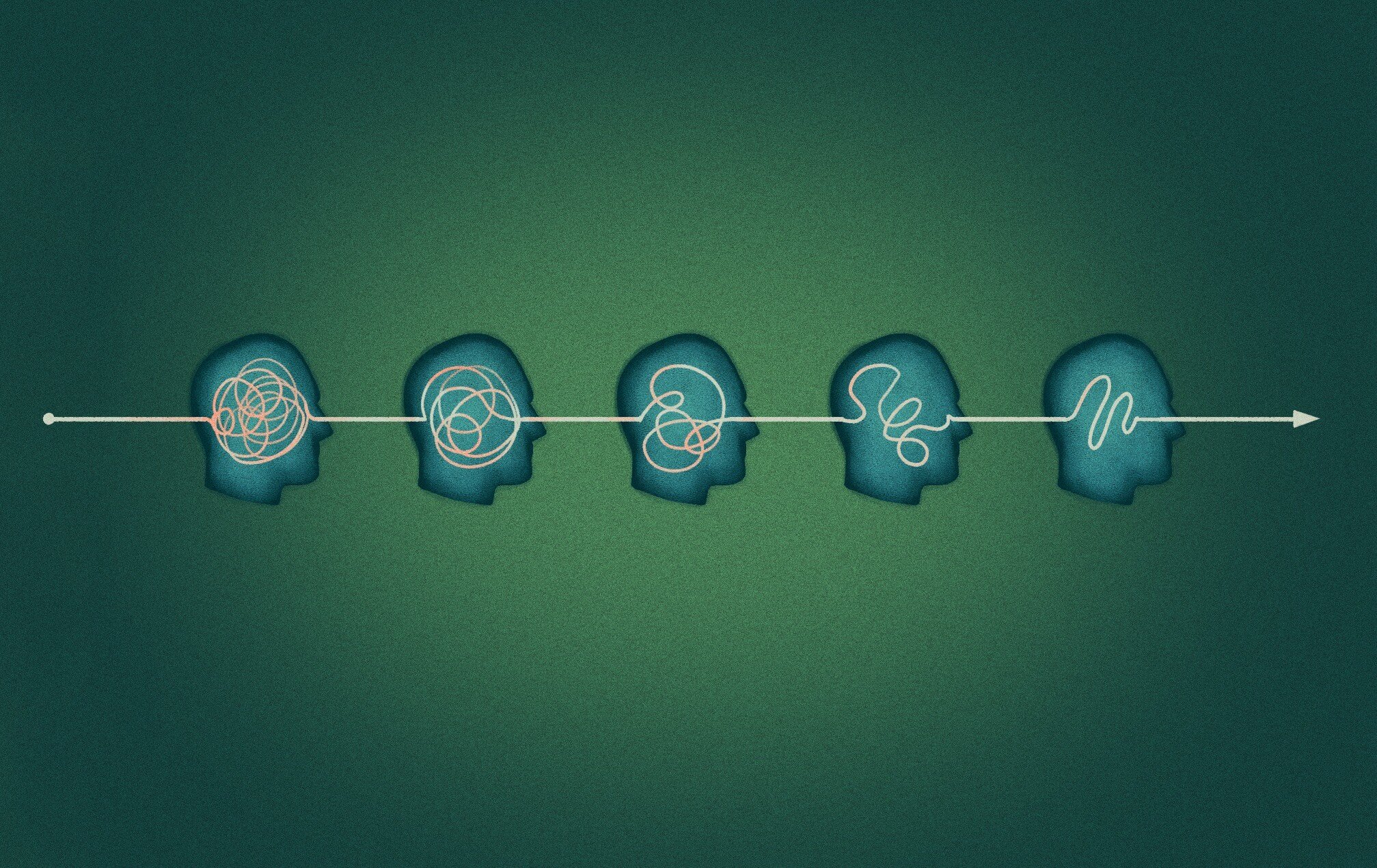Who hasn’t had a night where the sandman seems to have taken a vacation?
Sleep is a crucial aspect of overall health and wellbeing. But for those living with chronic pain, sleep can be especially elusive. We know that sleep and pain are deeply connected and can create a cycle that is difficult to break free from. And while sleep is an activity done at home, there are some things employers can do to help their employees improve their sleep.
How Sleep Improves Health
For much of history, it was assumed there wasn’t much going on while we sleep. But research says otherwise. It turns out that while we are asleep, the brain and body engage in activities that help us function better when we wake. Some of these include:
- Processing our experiences from the day
- Creating memories and learnings from those experiences
- Disposing of waste that brain cells produce
- Repairing and reenergize other body cells
Nearly one in three adults don’t get an adequate amount of high-quality sleep and roughly 25% of adults experience insomnia.1,2 And when sleeplessness strikes, it can distress every system in the body – the brain, the heart, the lungs, and even the immune system. As a result, lack of sleep is strongly connected to chronic conditions like high blood pressure, diabetes, and obesity.3
Poor Sleep Leads to Poor Performance
Given the havoc chronic sleep deprivation can wreak on the body, it’s no wonder that it is also hugely detrimental on a person’s productivity, including increased absenteeism, reduced presenteeism, greater risk of accidents and injuries, and high healthcare costs to address related chronic conditions.
This is because repeated problems sleeping affects the energy levels, concentration, and mood. People are more likely to experience stress and feel irritable, impatient, distracted, and foggy. Sleep deprivation can lead to poor balance and coordination as well as feeling drowsy, all of which are especially dangerous issues in the workplace.
In fact, it’s estimated that employees who experience chronic fatigue cost employers nearly $2,000 / employee annual in productivity losses.5
The Pain – Sleep Connection
For those people living with chronic pain, getting quality sleep can be a significant problem. Ranges vary, but one study noted that in the general population, about 20% of people who reported they had chronic pain also reported at least one symptom of insomnia, and among those people with chronic insomnia, 50.4% of people reported experiencing chronic pain.6,7
Sleep and chronic pain appear to affect one another in a reciprocal way. With worsening pain may come greater sleep disturbances. And a lack of sleep can lower a person’s tolerance for pain, creating a cycle that is difficult to break free from.8 Even in otherwise healthy participants, one night of sleep deprivation showed an increased sensitivity to pain and increased anxiety.9
Recent research also points to sleep impairments as a predictor of pain, suggesting that a lack of sleep may inhibit certain process within the body that “contribute to the development and maintenance of chronic pain, including… joint pain”.10
Employers Can Help Improve Sleep
While sleep happens at home, most of adults waking hours are spent at work. So employers can actually play a role in helping improve the sleep quality of their workforce.
- Challenge the 24/7 availability culture. One of the biggest things employers can do is set expectations around availability. In today’s work environment, screens are omnipresent and, if looked at too late in the day, can begin to interfere with sleep. Set expectations with employees around when they need to respond
- Make sure to get some sun shine. Exposure to natural sunlight each day can encourage the body’s natural circadian rhythms. So, if possible, encourage employees to get outside for a quick dose of Vitamin D during breaks or a change of scenery for a meeting.
- Go for a walk. We know sitting all day, especially in the wrong position, can wreak havoc on our musculoskeletal system. But staying sedentary can also inhibit quality sleep. A little bit of movement during the day can help, so maybe schedule that next conversation as a “walking meeting” or create a departmental movement challenge to incentivize getting up from workstations.
- Offer comprehensive benefits. Sleep is deeply connected to other aspects of health and wellbeing. Chronic conditions, including chronic pain, can exacerbate sleep issues. Employers should look for benefits and incentive programs that get to the root cause of poor sleep.
- Provide employees education. Make sure that employees have access to resources that can educate them on good sleep hygiene and habits.
Much like pain, sleep is personal. Some people need more, others less. Some people have an incredibly easy time falling asleep, others toss and turn all night. And while there are activities, routines, and recommendations for getting a good night of sleep, finding what works is an individual pursuit.
Contact RealizedCare to learn more about how our program addresses sleep for individuals living with chronic pain.
Sources
- CDC – data and statistics – sleep and sleep disorders. Centers for Disease Control and Prevention. https://www.cdc.gov/sleep/data_statistics.html. Published May 2, 2017. Accessed June 15, 2022.
- LeBlanc M, Mérette C, Savard J, Ivers H, Baillargeon L, Morin CM. Incidence and risk factors of insomnia in a population-based sample. Sleep. 2009;32(8):1027-1037. doi:10.1093/sleep/32.8.1027
- Brain basics: Understanding sleep. National Institute of Neurological Disorders and Stroke. https://www.ninds.nih.gov/health-information/patient-caregiver-education/brain-basics-understanding-sleep. Published April 1, 2022.
- Hui SK, Grandner MA. Trouble Sleeping Associated With Lower Work Performance and Greater Health Care Costs: Longitudinal Data From Kansas State Employee Wellness Program. J Occup Environ Med. 2015;57(10):1031-1038. doi:10.1097/JOM.0000000000000534
- Rosekind, Mark R. PhD; Gregory, Kevin B. BS; Mallis, Melissa M. PhD; Brandt, Summer L. MA; Seal, Brian PhD; Lerner, Debra PhD The Cost of Poor Sleep: Workplace Productivity Loss and Associated Costs, Journal of Occupational and Environmental Medicine: January 2010 – Volume 52 – Issue 1 – p 91-98 doi:10.1097/JOM.0b013e3181c78c30
- Tang N. K. (2008). Insomnia Co-Occurring with Chronic Pain: Clinical Features, Interaction, Assessments and Possible Interventions. Reviews in pain, 2(1), 2–7. https://doi.org/10.1177/204946370800200102
- Taylor DJ, Mallory LJ, Lichstein KL, Durrence HH, Riedel BW, Bush AJ. Comorbidity of chronic insomnia with medical problems [published correction appears in Sleep. 2007 Jul 1;30(7):table of contents]. Sleep. 2007;30(2):213-218. doi:10.1093/sleep/30.2.213
- Haack, M., Simpson, N., Sethna, N. et al. Sleep deficiency and chronic pain: potential underlying mechanisms and clinical implications. Neuropsychopharmacol. 45, 205–216 (2020).
- Jo Nijs, Olivier Mairesse, Daniel Neu, Laurence Leysen, Lieven Danneels, Barbara Cagnie, Mira Meeus, Maarten Moens, Kelly Ickmans, Dorien Goubert, Sleep Disturbances in Chronic Pain: Neurobiology, Assessment, and Treatment in Physical Therapist Practice, Physical Therapy, Volume 98, Issue 5, May 2018, Pages 325–335, https://doi.org/10.1093/ptj/pzy020
- Finan PH, Goodin BR, Smith MT. The association of sleep and pain: an update and a path forward. J Pain. 2013;14(12):1539-1552. doi:10.1016/j.jpain.2013.08.007



